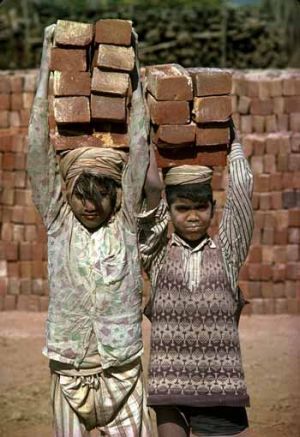
Despite laws prohibiting child labour, with overwhelming poverty in the country the Indian government appears to be helpless in eliminating child labour in the country. The architects of the Indian Constitution had provided for free and compulsory education for children up to the age of 14. The Bonded Labour System Abolition Act 1976 and the Child Labour Regulation Act 1986 had been enacted to eliminate child labour from the Indian society. However, child labour persists in the country. The Government of India has not fixed any target to abolish child labour, but it has already implemented the National Child Labour Project Scheme for the elimination of child labour in 250 districts of 20 states of the country. Under the scheme, children engaged in hazardous occupation are withdrawn from work and put in Special Schools where they are provided with education, vocational training, nutrition and healthcare facilities before moving them to the mainstream education system.
Child labour is deeply rooted in the feudal structure of the Indian society. Poverty, unemployment and illiteracy are the main reasons responsible for this problem. Often it has been found that child labour arises out of debt bondage of the parents of these unlucky children. According to the Indian government, 12.7 million children under 14 years of age are employed in various occupations. However, the United Nation and the children’s advocacy groups put the figure at above 40 million. Most of the children are employed in factories, collect fees in parking lots, sort recyclables, pick crops, sell vegetables, work as vendors and are employed in small roadside restaurants. These children often financially support their families. It is unfortunate that when there is so much talk about India shining, a huge pool of its children lead a life immersed in poverty, illiteracy and deprivation.
Source:arbiter online
Image




